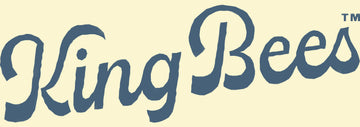Kia ora Bee & Honey lovers
Spring has landed on the East Coast, and that means one thing: the bees are getting more active and therefore hungry. Winter stores are running low, brood (bee babies) is building fast, and it’s the season where planting for pollinators makes all the difference.
Whether you’ve got a full hive in the backyard or just a sunny windowsill, you can help feed the bees this Spring.
Spring Planting for Bees: Diversity is Everything
When bees come out of Winter, they need fuel fast. Planting a variety of Spring-flowering trees, shrubs and herbs makes sure they’ve got steady food supply to build strong colonies. Here’s why it matters:
-
Early Spring bloomers = first lifeline Willows and wattles flower before many natives. Their pollen is vital for kickstarting brood rearing (baby bees need protein).
-
Natives = nectar backbone Kōwhai, harakeke (flax), rewarewa, and tī kōuka (cabbage trees) all burst into bloom in Spring, offering nectar and pollen that keep bees going strong.
-
Herbs + garden plants = constant top-ups Lavender, rosemary, thyme, borage and mint provide easy-access nectar while natives catch up.
-
Fruit trees = dual purpose Plum, apple, feijoa and citrus blossoms are pollinator magnets and reward you with fruit later in the season.
-
Diversity prevents ‘hunger gaps' Different plants flower at slightly different times. A mix of natives, exotics and herbs ensures bees never face an empty cupboard in Spring.
What to Plant for Bees A steady flow of nectar and pollen is what keeps colonies thriving. Here are our top picks for planting this season:
- Rosemary, borage, calendula, hebe
- Lavender, sunflowers, thyme, clover
- Cabbage trees (tī kōuka), harakeke (flax), mānuka, rewarewa, willows and kānuka are rich, reliable nectar sources that have fed bees and birds for centuries.
Every flower counts. From raised garden beds and pot plants to big native bush blocks that support pollinators long-term. For more ideas click here.
What Beekeepers Are Doing Right Now Spring is our busiest time in the apiary. Here’s what’s happening around the hives:
- Checking that Queens are laying eggs and brood is healthy and strong
- Adding space (more honey boxes and frames) so hives don’t swarm
- Planting nectar-rich natives to fuel the season ahead
Why It Matters A well-fed hive in Spring becomes a strong hive in Summer, and that’s when the honey flow begins. By planting for pollinators, you’re not just helping bees, you’re helping the land, the people and the seasons to come.
Join the Movement
We’re calling on YOU to help create a bee-friendly Aotearoa this Spring. Plant, snap and share what you're doing to help fuel the bees.
Here’s how it works:
September = first burst of Spring blooms. Plant something bold this Spring, whether it’s natives, herbs or flowers. Share your bee-friendly garden or even a fav tree on your street, or your local park. Keep it fun and creative! Share it with us on Instagram or Facebook ~ tag @kingbeeshoney and use #kingbeeslovespring so we can see what you’re growing or loving.
- Post a photo/vid of a bee-friendly plant, flower or native in your garden or community.
-
Tag @kingbeeshoney and use #kingbeeslovespring
- Each Sunday in September we’ll pick a winner to receive a FREE jar of King Bees honey.
Show off your bee-friendly backyard (and maybe learn something new along the way).
Let’s fill Aotearoa with bee food and celebrate the season of growth.
Together, we keep the hives humming.
Stay wild, stay sweet,
Bee well ~
Mike & Cate ~ King Bees



